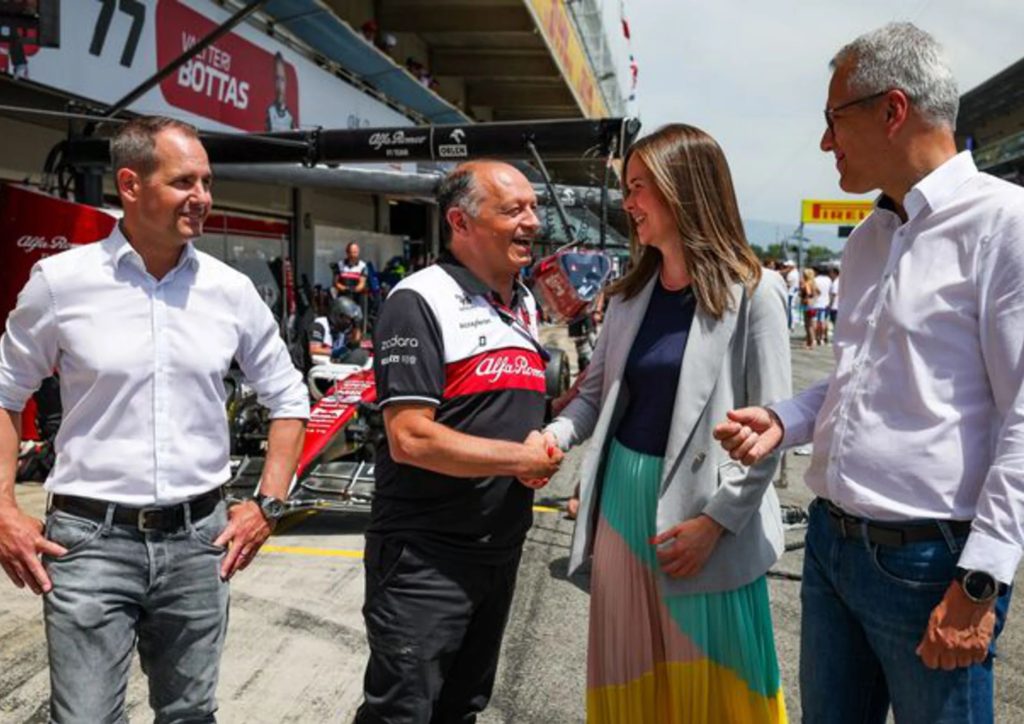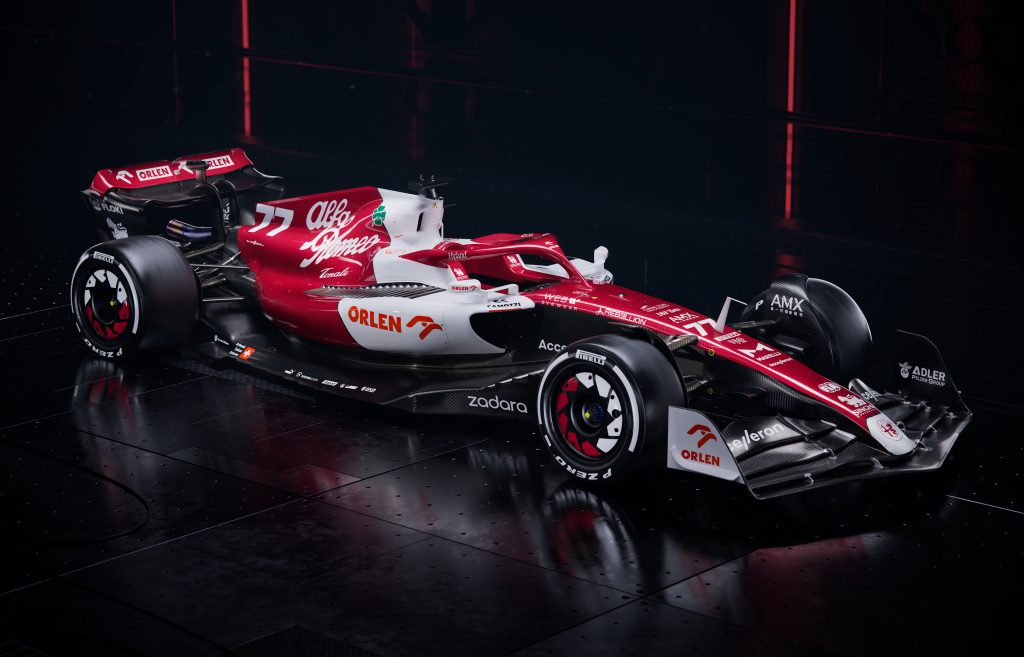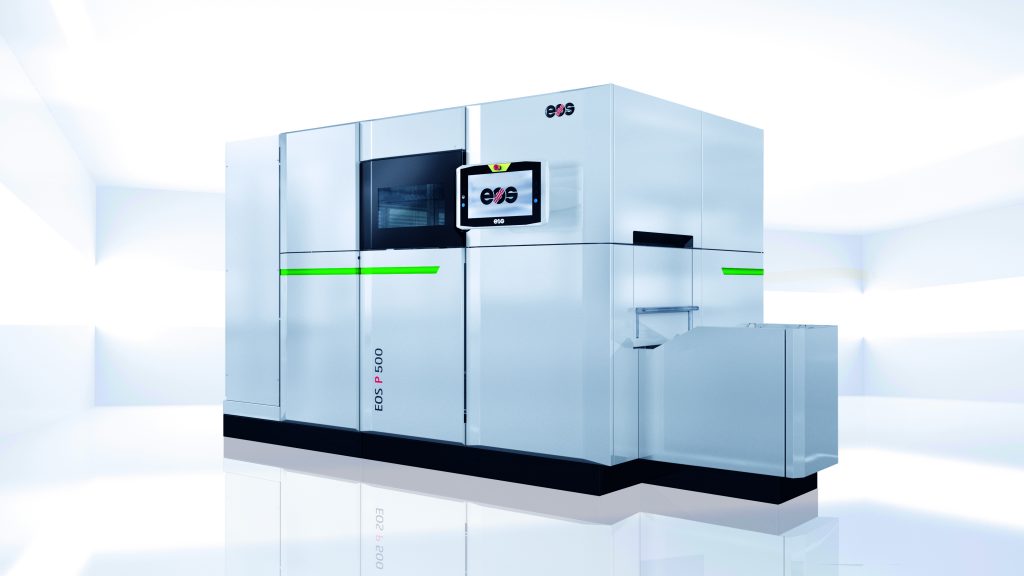Leading 3D printer manufacturer EOS has agreed a three-year technology partnership with Sauber Technologies, a subsidiary of the Sauber Group that runs the Alfa Romeo Formula 1 team.
Signed at last weekend’s Spanish F1 Grand Prix, the deal will see the pair 3D print everything from production aids and aerodynamic spoiler designs to end-use race car parts. Through a process of “constant optimization,” the firms say they aim to not just unlock efficiency and throughput gains for Sauber’s Formula 1 outfit, but explore the technology’s wider motorsport potential.
“We see AM applications in F1 for both prototyping and serial production where reproducible part quality is key,” says Markus Glasser, Senior VP of EMEA at EOS. “Together with Sauber we are aiming to set new benchmarks here. With more serial AM applications in F1, automation will be essential too, enabling higher productivity and reduced costs per part.”
“Sauber is the first customer for polymer-based AM, integrating this into its production, including the installation of an EOS P 500 system.”

Sauber’s 3D printing operations
Founded by Peter Sauber in 1970, the Sauber Group is a Swiss motorsport engineering company that’s best known for its exploits in Formula 1. The firm ran an independent team in the sport from 1993 to 2006 and 2010 to 2018, briefly operating as a BMW factory outfit for a short time in between, before agreeing a partnership with Alfa Romeo that has seen it run under the latter’s moniker since 2019.
As well as continuing to play an active role in the R&D of the Alfa Romeo F1 Team ORLEN race car, the Sauber Group has also sought to place itself at the forefront of automotive 3D printing innovation. Alongside Additive Industries, the firm has set up a Metal 3D Printing Competence Center, where it initially intended to install two machines in three years, but now 3D prints over 22,000 parts per year.
Since then, Sauber has worked with AM Solutions too, to bolster its post-processing capabilities, and consistently deployed 3D printing in the production of its Formula 1 race cars. While 2021’s ‘C41’ featured 304 3D printed parts, this year’s includes fewer in number, but many are said to be structural F1 components, and Sauber’s deal with the Camozzi Group should only further these applications of the technology.
Away from F1, the Sauber Group has also set up its Sauber Technologies business, with the aim of applying its motorsport experience in the wider world of automotive. Already, the firm has unveiled plans to 3D print spares for vintage cars, while its Sauber Engineering arm has gained TÜV SÜD AM Production Site Certification, and working with EOS is now expected to aid its on and off-track ambitions.

Adopting EOS laser sintering
As a first step towards realizing the F1 and wider motorsport objectives outlined for its latest technology partnership, Sauber Technologies is set to install an EOS P 500 3D printer later this year. According to EOS, the machine has a build rate that’s twice as rapid as the next fastest laser-sintering system on the polymer market, the EOS P 396, thus it should enable Sauber to deploy it within serial production.
EOS has also highlighted the unit’s preheating features and low maintenance as potential drivers of uptime and lead time gains for Sauber, while adding that its ease of integration into existing MES/ERP systems could enable industrial-scale QA.
Beyond its initial use in the production of spoiler designs, the partners haven’t disclosed any other applications of the machine, but they have revealed that their initial work will involve EOS’ PA 2200 material. More broadly, Sauber Technologies COO Christoph Hansen has described its deal with EOS as a “perfect culture fit,” and hailed the potential of the firm’s portfolio to help scale its 3D printing operations.
“EOS and Sauber share the same passion for application-driven design and the highest quality standards,” adds Hansen. “From a technology perspective, we cooperate with EOS because its ecosystem of partners and sister companies not only enables the end-to-end solutions we need, including automation, but provides us with highly custom solutions via AMCM (Additive Manufacturing Customized Machines).”

Additive manufacturing in Formula 1
Unsurprisingly, given the rapid iteration required of F1 teams to stay competitive, many have turned to 3D printing in a bid to move up the grid. Speaking to 3D Printing Industry earlier this month, Formula 1 aficionado Pat Warner revealed that as many as 70{09e594db938380acbda72fd0ffbcd1ef1c99380160786adb3aba3c50c4545157} of the Alpine F1 car’s bodywork parts are prototyped via 3D printing, many using 3D Systems’ technology.
Ahead of the 2021 season, Williams Racing also partnered with Nexa3D, in a deal that has seen it deploy the technology to 3D print polymer motorsport parts. Specifically, the team has utilized Nexa3D’s high-speed NXE400 system to manufacture functional wind tunnel components, designed to help test the aerodynamic properties of its race cars.
Elsewhere, McLaren Racing is known to have a long-term partnership with Stratasys, that has enabled it to use additive manufacturing trackside since at least 2017. Since then, the technology is understood to have enabled the production of parts ranging from hydraulic line brackets and brake cooling ducts, to rear wing flaps for the team’s challengers.
To stay up to date with the latest 3D printing news, don’t forget to subscribe to the 3D Printing Industry newsletter or follow us on Twitter or liking our page on Facebook.
For a deeper dive into additive manufacturing, you can now subscribe to our Youtube channel, featuring discussion, debriefs, and shots of 3D printing in-action.
Are you looking for a job in the additive manufacturing industry? Visit 3D Printing Jobs for a selection of roles in the industry.
Featured image shows members of EOS’ leadership team meeting Sauber’s Frédéric Vasseur and Christoph Hansen at the 2022 Spanish F1 GP. Photo via EOS.